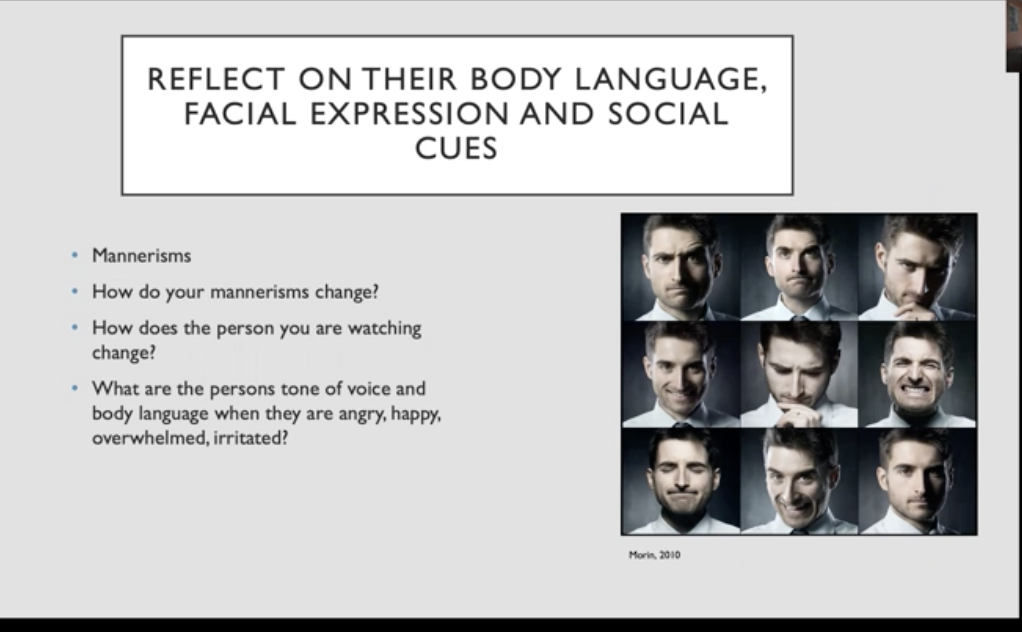How To Read the Room So You’re More Confident Around Your Co-workers
Some people Read the Room easily, while some don’t. Now, with the extra layer of needing to interpret others virtually, it can be even more nuanced than ever.
As a world, we are reaching a social crisis. Stress, loneliness, uncertainty and political divide are just some of the recent demands influencing our ability to Read the Room. You may have been good at Reading the Room before, but now it is difficult. In addition, we’re having self-regulation issues around being a good co-worker. In this new emotionally-charged climate, we need to take perspective more than ever.
Benefits of Emotionally Intelligent People
Emotionally intelligent people just plain out perform others. They have more friends, more creative outlets and they report a greater level of happiness. They tend to get better grades, then they get better jobs that they have personally tailored to their strengths. Those with lower self-awareness have a tougher time to calibrate their strengths and weaknesses.
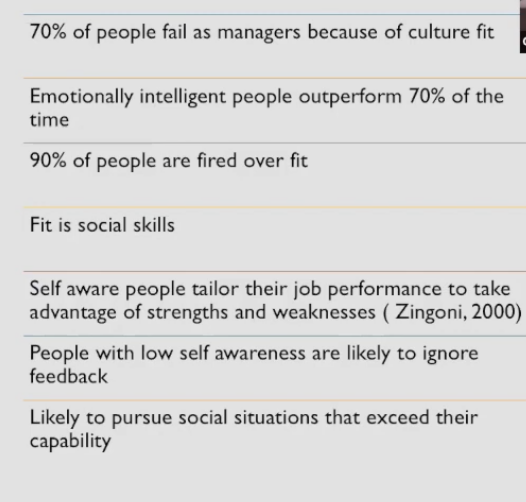
What is Reading the Room?
When you Read the Room, you scan the room to interpret energy, facial expressions and context. What is going on – in the room, lives and the world as a whole? This works both virtually and in person. The ability to effectively Read the Room allows you to better adapt to varied situations, read non-verbal cues and better tailor your message.

Exercise: Go on “Field Trips” – visit stores, coffee shops, etc., and ask yourself, “Who is “in charge and giving orders? Who is ‘grumpy?’” Even with masks on you can see eyes and hear dialog and tone of voice.
What are The Elements Involved in Reading the Room?
Social Spy
Many of us are not great social observers and have difficulty Reading the Room. What’s more, stress – which most of us are wrestling with – makes us less likely to connect and observe. If we are hesitant, we worry that we need to engage more. For adults with ADHD, this may translate into barging in and “doing” rather than hanging back and observing. If you are struggling, being a Social Spy is one of the best ways to get started. As a Social Spy, you observe, discreetly, hold back, and take an inventory of the group or situation’s mood, tone, members, energy, etc.
Who is Your Audience?
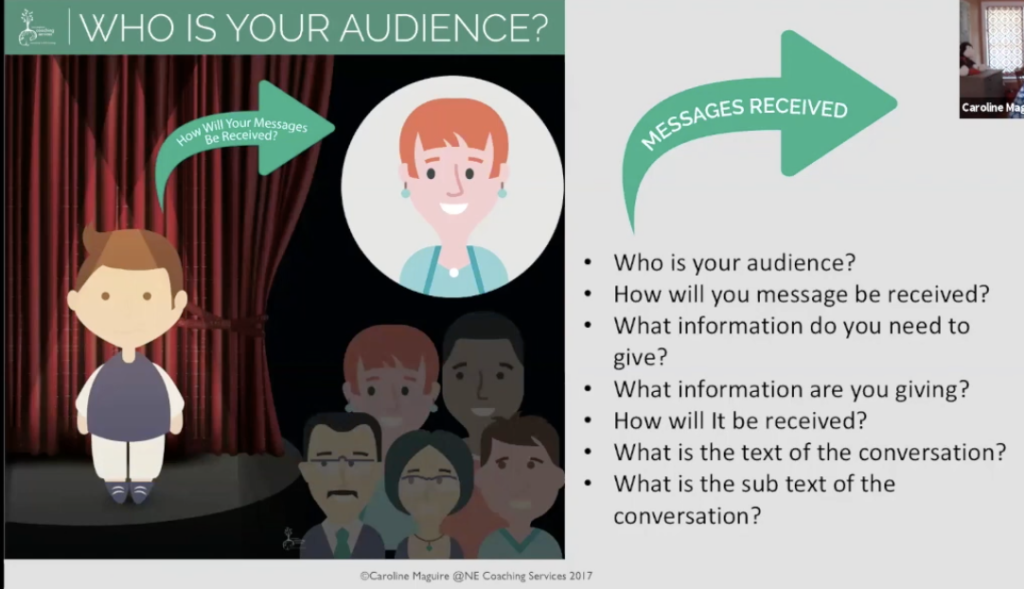
When approaching a group, in-person or virtually, ask yourself, “Who is my audience? What info am I giving? How will it be received?” Recognize that messages do not always come across literally. When we give feedback and instructions, we may assume that others understand what we are conveying. But if the recipient doesn’t understand our message, they will consider it vague and will require “more” information and context. Use your Social Spy skills to “spy” (pause, read between the lines, and decode their requests). Use this intel to paint a clearer picture of what you are saying because they can’t read the subtext.
Perspective Taking
Considering your co-workers beliefs, values, behaviors and stepping into their shoes gives you social data to better qualify their perspective.
Perspective taking is even more important when there is limited to no interpersonal interactions. How do you do this? Practice by doing an inventory on a co-worker you know well and try to predict their reactions. Another opportunity is to pause and interpret the energy before or after a meeting.
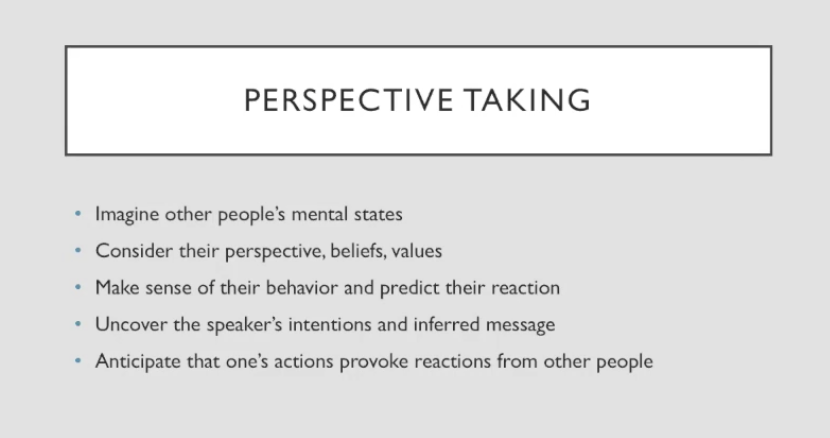
Reading Mood
Mood is subtle. It is a vibe. Mood is made up of facial expressions, body language, and unspoken messages. We try to read the mood to identify the emotional state of another person. Who are they? What messages are they conveying at that moment using their body language, tone of voice and word choices?
Exercise: Pick two co-workers to try to identify what they do with body and their voices while experiencing different moods. If you are trying to read an obtuse person, identify how they act with body and voice in multiple situations. Example: if they are now quiet yet rarely are, look for patterns and notice their mood. Could they be feeling down because they are sick, or distracted? Make your mission for the next interaction to just notice: pace of language (hurried?), tone (stressed?) and if they are asking more questions or speaking more slowly than usual (apprehensive)? Do this habitually and scan everyone in your circle to create a mental playbook.
Context
Context is situation, mood, circumstances, etc. Pause, scan and spy so you can hear and discern better. Ask yourself, “Where is this happening, in a formal or informal location? Who is there? What are they up to? What are they experiencing?” Use this information to adjust your message. Reading context is more difficult in zoom, but certainly possible with practice.
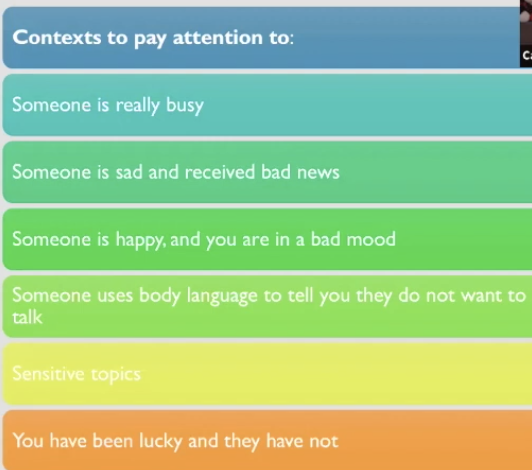
Empathy
You can’t possibly know everything about your co-workers, but try to operate with an understanding that they are “probably” stressed and dealing with uncertainty. Give off the feeling that you “get it.”
Exercise: Role play entering different situations and decode what is going on.
Written Communication
Emails, texts, messaging can be Interpreted differently than what you intended. With written dialog, especially ones that are sensitive or if you don’t know the person well, I recommend waiting an extra night before hitting “send.” Step into the shoes of the other person. Do you really want to send a salesy email when things are going on in this person’s family, life or at work? “Dashing off” messages is not a good plan. Instead, consider history and perhaps rephrase to telegraph what you truly mean to say.
Practice
Assign yourself a series of activities and then practice one at a time. Pick one mission only; you will gain better clarity if you work in segments or pieces rather than working on everything at once.
Exercise: Practice hanging back and interpreting what is happening in a zoom meeting. Leave your camera on and interpret body language.
Life changing skills take time, but are oh, so worth it. Imagine one year from now how delighted you will be that you didn’t quit. Practice these steps and you will do better in life.
Social Skills Deeper Dive
More actionable advice, exercises and videos can be found in the Store
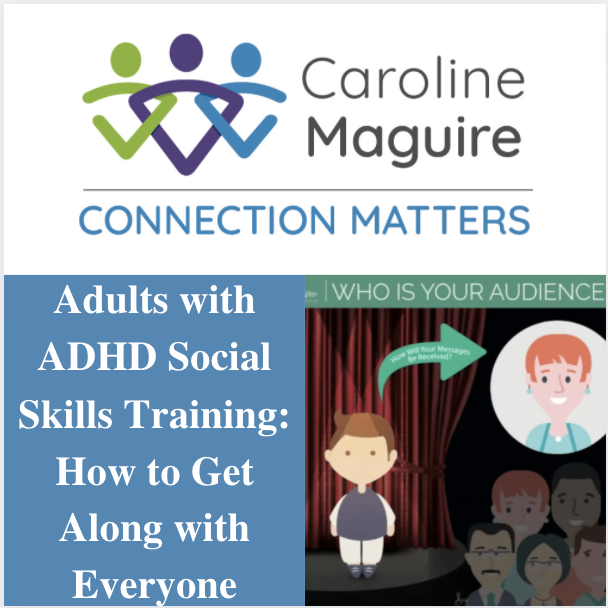
Adults with ADHD Social Skills Training: How to Get Along with Everyone – 2-Part Seminar with Caroline Maguire – Starting December 7, 2021
Rusty Social Skills Bundle – Everything you need to help students return to the classroom for the development of critical social skills.
How to Read the Room as an Adult – Managing perceptions and engaging successfully
How To Improve Social Skills In The Workplace
Wanna Make More Friends? Learn How to Make Small Talk
Coaching Conversations Video Course – How to use the lessons in Why Will No One Play with Me? in everyday life using real people and real scenarios
From “Hi” to a Full Conversation – How to adapt conversation starters to initiate small talk.
Joining a group Infographic – Make joining a group less intimidating – and more fun!
Building a Conversation Infographic – Learn how to engage in reciprocal give-and-take
Steps for Joining a Group Video – Step by step details to comfortably and successfully join a group
How to SEL – HOW TO help children build social skills

